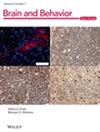Exploring the Effects of Cerebellar tDCS on Brain Connectivity Using Resting-State fMRI
Abstract
Purpose
The cerebellum's role extends beyond motor control, impacting various cognitive functions. A growing body of evidence supports the idea that the cerebellum optimizes performance across cognitive domains, suggesting critical connectivity with the neocortex. This study investigates how cerebellar transcranial direct current stimulation (tDCS) targeting the right Crus II region modulates functional brain connectivity.
Method
Using a within-subject design, 21 healthy participants underwent both sham and anodal cerebellar tDCS at 2 mA during 20 min of concurrent resting-state fMRI sessions. Data was preprocessed, and connectivity changes were examined using seed-to-voxel analysis. Given the potential impact of cerebellar dysfunctions on symptoms associated with autism spectrum disorders, we also assessed how individual autism quotient (AQ) scores might influence cerebellar functional connectivity. Moreover, electrical field simulations were computed for each participant to explore the effects of individual differences.
Findings
Results indicated increased functional connectivity between the cerebellar Crus II and the right inferior frontal gyrus (IFG) during active tDCS compared to sham stimulation. The IFG (part of the Action Observation Network) plays a crucial role in understanding the actions and intentions of others, implicating the cerebellum in higher-order cognitive processes. In addition, linear mixed-effects models revealed an interaction between electric field strength and AQ scores, suggesting that functional connectivity changes are based on individual psychobiological differences.
Conclusion
Cerebellar tDCS significantly altered functional brain connectivity, particularly between the cerebellar Crus II and the IFG, both involved in social cognition. These findings contribute to our understanding of the cerebellum's role beyond motor control, highlighting its impact on cognitive and social processes and its potential for therapeutic applications, such as autism spectrum disorders.


 求助内容:
求助内容: 应助结果提醒方式:
应助结果提醒方式:


